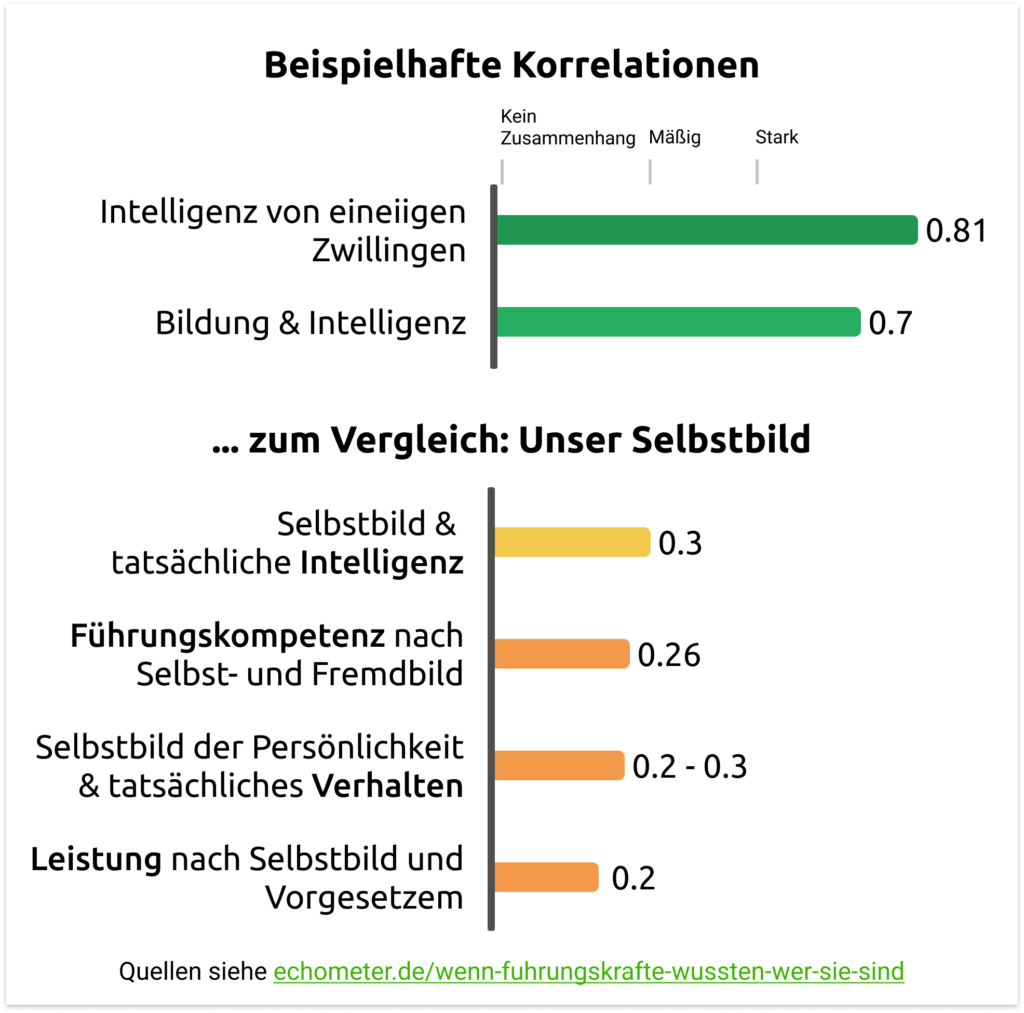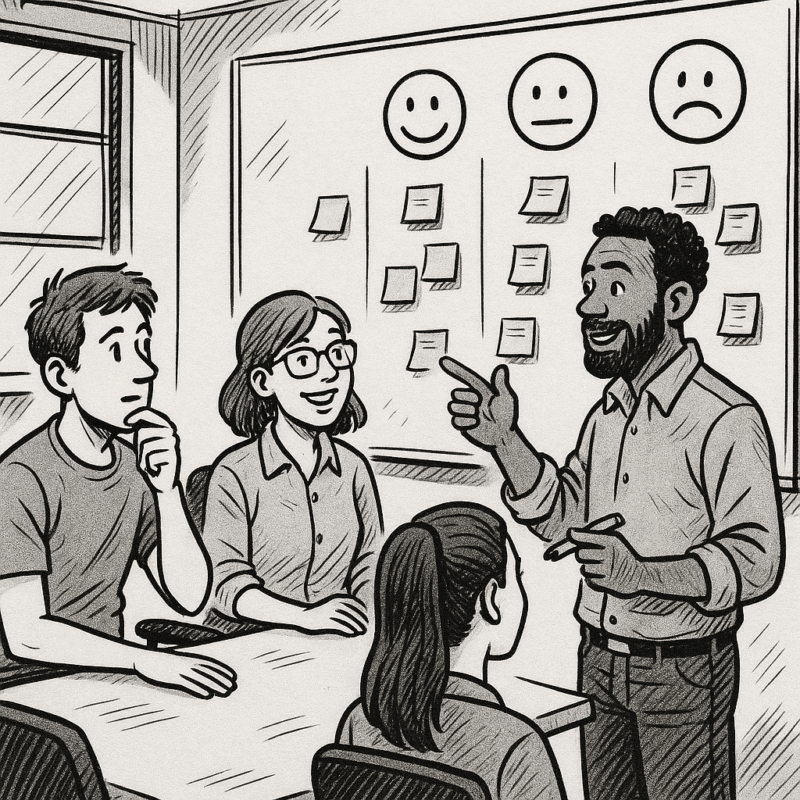Small became big: While initially only software development relied on Agile, today large companies like Netflix rely on it in all departments. It's no wonder: teams can learn agile quickly and put it into practice.
It's different with Agile for Leadership. You can't learn to lead Agile teams in a short time. That’s because you don't only have to become professionally competent through an Agile Leadership Training, but you also have to bring along numerous other skills.
I'll show you what Agile for Leadership is, how your organization can benefit from it – and what qualities an Agile Leader should have.
Agile Leadership Definition
First of all, I have to say: there is no one right definition of Agile for Leadership. Depending on the interpretation of the concept, the Agile Leaders in the organization, and the particular situation in the team and the project, Agile for Leadership can combine different principles and values.
And that's fine – it can make perfect sense to define your own Agile Leadership values, depending on your own culture. But we can give you a few guidelines for your model here.
The Agile Leadership Model usually means that a company can efficiently adapt to change. It supports employees on an equal footing to find the ideal solution to a challenge. The focus of the collaboration is to create a product with a high added value for the customer and thus to achieve maximum customer satisfaction. The Agile Leadership Model is characterized by openness to new ideas, transparent communication and flat hierarchies or, in principle, no hierarchies at all.
8 Agile Leadership Principles
With that, you have a first Agile Leadership definition at hand. To better understand how the leadership concept works, let's take a look at 8 important Agile Leadership principles:
1. Model agile working!
With Agile for Leadership, it's not enough that you drive the change towards agile thinking and working with your words. It is crucial that you exemplify the change. You have to set a good example for others to follow: "walk the walk."
2. Approach problems holistically!
Agile leaders look at problems from multiple perspectives. To do so, they seek input from the employees closest to the problem. In this way, they ensure that they are relying not only on a data set, but also on personal assessments.
3. Demand feedback!
As an agile leader, give employees open, honest, and respectful feedback on a regular basis. This is the only way they can continue to develop and fully integrate agile thinking into their actions.
In doing so, you must also be a role model for your employees. This means: you also solicit meaningful and useful feedback from them for your work. How you can build a healthy feedback culture in your organization, we explain in our article "6 ways to create a fruitful feedback culture".
4. Create a shared vision!
Every leader has his or her own vision for change in the company. To make employees aware of this vision, you need to understand and comprehend what is going on in their minds and hearts. Only with this knowledge can you unite their values with yours – and integrate them into your vision. The result: You have a common goal.
5. Awaken emotions in your colleagues!
Emotions are an important part of the human experience. People who work with their emotions, in other words, who put their heart and soul into their work, fully exploit their potential. Agile for Leadership therefore promotes innovation and creativity at work above all else. It communicates tasks honestly, openly, transparently and motivationally - and thus awakens emotions in employees.
6. Hand over leadership to employees!
Agile leaders do not lead alone. They also give employees the trust and space to direct themselves. People work best when they are empowered, engaged and energized. In this way, Agile leaders lay an important foundation for an Agile culture to thrive. We'll show you what other factors drive an agile culture in our post "Agile Culture: The 10 ingredients you need for your organization".
7. Create collaborative communities!
Agile leaders create communities in departments and teams based on respect and trust. They provide these communities with everything they need to work effectively. Above all, this includes positivity, generosity, forgiveness and gratitude. This creates an environment in which they can use and develop their skills to the fullest. And, it creates a psychological safety within the community that promotes learning and development.
8. See yourself as a coach!
Agile leaders do not see themselves as the "head" of the team. They see themselves as enablers who help their employees help themselves. This is where the term "servant leadership" comes into play. You are not supposed to solve your employees' problems but help them solve them themselves.
However, the work within the community remains untouched by the Agile Leader. This promotes independent thinking, working, decision-making and leadership – which brings us back to the sixth Agile Leader principle.
What qualities does an Agile Leader need to have?
You now know the 8 most important principles on which Agile for Leadership is based. What do you need to bring to your organization to implement these 8 principles? Traditionally, organizations select leaders who excel at their jobs. However, this does not mean that they are also suited for Agile for Leadership. So, what skills does an Agile leader need?
Well trained in Agile
The part that is easy to learn: a good Agile leader should simply be well trained in the classic Agile frameworks such as Scrum and Kanban, optionally also in Scaled Agile Frameworks. The larger one's toolbox of agile methods or even other competencies (e.g., systemic coaching), the more perspectives one can provide on how to solve challenges in agile ways.
Socially competent
While technical and methodological expertise is important, it is social skills that determine how successfully employees can lead in an agile manner and exemplify Agile Leadership values. This requires skills like empathy, but also skills like intuition and instinct. In practice, as an Agile Leader, you need these skills, for example, to listen to employees at the right moment, to motivate them, or to steer them in the right direction when problems arise.
Motivating
An agile leader manages to motivate employees again and again, regardless of the project status. He or she transports enthusiasm into tasks and collaboration with colleagues. In this way, the agile leader pulls people along to achieve the shared vision.
Focused
An Agile leader must be able to keep an eye on what is important. With countless tasks, deadlines, and responsibilities, it can be difficult to keep an eye on the big picture. A suitable leader always sets the right priorities to create the most value for the customer.
Self-reflective
To evaluate their own performance and constantly improve, an Agile Leader must be exceptionally self-reflective. The following applies:
"The better a leader can assess him- or herself, the better an employee's performance, social behavior, and loyalty."
Whittington, Coker, Goodwin, Ickes, & Murray, 2009; Fleenor, Smither, Atwater, Braddy & Sturm, 2010
That we are all not particularly good at estimating ourselves is shown by the following graph. To understand: the closer the value is to 1, the higher the correlation between the two variables (it is a correlation):
The numbers show unequivocally: our self-image is inaccurate. You need to be aware of this. Only with this knowledge can you always practice self-reflection that really moves you forward. For example, you can regularly ask for feedback. You can find out more about this in our article on self-reflection for managers.
Create psychological security
I already mentioned psychological security in the Agile Leadership principles. As an Agile leader, you should be able to create psychological safety within work communities and teams. Psychological safety is the shared belief among all team members that it is safe to take interpersonal risks within the team. Psychological safety is therefore considered the secret of a particularly successful team.
Google also comes to this conclusion. In the Project Aristotle the search engine investigated the question of which factors characterize the most effective teams. The result was that it is not the combined intelligence of the team members or the longest work experience, but psychological security. We explained how you can build this in your teams in our article "Improving teamwork: Psychological security" .
Communication
Agile leaders communicate openly, directly and transparently with their employees. Their goal is always to remove obstacles and motivate team members. In this context, it is particularly important to listen to what employees have to say. This can be about professional problems, personal successes, or interpersonal tensions.
Adaptable
Agile leaders can adapt to any situation. This can be changes in the team, the project, or the market. They are able to respond quickly, innovatively and creatively – always keeping strategic priorities in mind. In this way, they always steer their organization in the right direction.
How do I measure value and success in Agile for Leadership?
Let's say you have completed your Agile Leadership training, internalized the Agile Leadership values, and are implementing the principles of Agile Leadership in your organization. But how can you now verify that you and other installed Agile leaders are doing a good job? In other words, how can you measure whether Agile for leadership is valuable to your organization?
The two most important Agile Metrics for Leadership are:
Meeting Customer Needs: Is your organization managing to meet or exceed customer expectations, needs, and wants?
Team Health: How satisfied are teams in your organization? How do employees feel about their jobs? How do they relate to their colleagues? We show you which models you can use to measure team health, for example, in our Agility Health Radar.
In addition, there are several small Agile Metrics for Leadership that you can use to evaluate success in your company. These include
- good predictability of project progress,
- increasing productivity,
- a higher product quality, and
- a growing and learning organization.
We'll show you what other Agile Metrics for Leadership there are in our post "9 Agile KPIs that executives should know".
How you benefit from Agile for Leadership
Actually, the Agile Metrics for Leadership already show you quite clearly how you and your organization benefit from Agile for Leadership. However, the benefits just mentioned are more about the big picture.
To illustrate once again what Agile for Leadership can do "on a small scale," let's take a look at the specific benefits for employees and teams. With agile leadership in place, they communicate, learn and work
- more efficiently,
- more autonomous,
- more motivated,
- more engaged,
- with more confidence in themselves and others
- more appreciative and
- more successful.
In short: Agile for Leadership promotes the development of your employees and thus your organization at all levels.
Prepare (resilient) leaders for agile transformation
Leaders play an absolutely critical role in agile transformations. One of the biggest blockers to their success are leaders who are afraid of losing the power they've spent years building. Their "waterfall mindset" (effectively the opposite of the Agile Mindset) is too deeply entrenched. How you can meet this challenge early we have addressed in the following video – including five concrete tips:
Conclusion
Agile for Leadership is a holistic approach to shifting the way of working and thinking to Agile at all levels of an organization, creating a vibrant Agile culture. It takes an Agile mindset to truly become a role model here. Take a look at our interactive "Agile Mindset Test" to get a more concrete picture of this.
To implement transformations efficiently in general, we show you in Project Scagile, which 7 mistakes you should avoid at all costs. Feel free to take a look. The workshops are free of charge.









